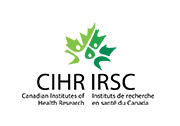
Aboriginal Peoples: In Canada, the term “Aboriginal peoples” refers to three distinct groups: First Nations, Inuit and Métis people. The federal government distinguishes between registered (or status) and non-registered (non-status) Indians. A status Indian is a First Nations person registered under the terms of Canada’s federal Indian Act. Registration ensures the right to live on-reserve and have access to treaty and/or policy-defined benefits provided by the federal government (subsidized medication, eye care, etc.). Non-registered Indians are a provincial jurisdiction. Métis are not eligible for registration. We are using the term Aboriginal peoples to highlight the diversity of Nations, groups and communities represented therein [1].
Culturally Safe Care: Taking into account not only the cultural meaning of health and illness, but equally importantly, people’s experiences of racism, discrimination and marginalization and the ways those experiences shape health, life opportunities, access to health care, and quality of life [1].
Emergency Department Care: The purpose of emergency department is to provide acute care for patients in urgent need and provide specialist services for serious conditions and life-threatening injuries. Emergency departments act as a source of primary health care when primary health care clinics are not accessible. Community primary health care is lacking, and therefore, emergency departments act as a point of care for marginalized populations [2].
Equity Informed Care: Explicitly addressing the social determinants of health as legitimate and routine aspects of health care, often as the main priority [1].
Harm Reduction: harm reduction is a philosophy and a set of programs and services. It focuses on preventing the harms of substance use, not reducing substance use. Harm reduction views substance use a health issue. Practicing harm reduction means accepting people as they are and avoiding judgement. It emphasizes dignity and compassion [3].
Health Equity: Equity in health can be defined as the absence of systematic and potentially remediable differences in one or more characteristics of health across populations or population groups defined socially, economically, demographically, or geographically [4].
Health Inequities: Health inequity refers to differences in health or access to care that can result from structural arrangements that are potentially remedial; in this sense, inequities may be deemed unjust [5].
Indigenous Peoples: The term Indigenous peoples is used to refer to the diversity of populations throughout the world. In Canada, 4.3% of the population identify as Indigenous [6]. This includes First Nations, Métis, and Inuit people. The term Aboriginal is also commonly used, and the colonial term ‘Indian’ is still used in federal government policy documents (e.g., The Indian Act) [7].
Marginalized Populations: Refers to the inequitable social conditions that result in a disproportionate burden of ill health and social suffering among particular groups or individuals, as well as peoples’ agency, resistance and resilience in the face of these challenges [8].
Primary Health Care (PHC): “Primary health care refers to an approach to health and a spectrum of services beyond the traditional health care system. It includes all services that play a part in health, such as income, housing, education, and environment. Primary care is the element within primary health care that focuses on health care services, including health promotion, illness and injury prevention, and the diagnosis and treatment of illness and injury.” [9].
Social Determinants of Health: “The social determinants of health are the conditions in which people are born, grow, live, work and age. These circumstances are shaped by the distribution of money, power and resources at global, national and local levels.” [10].
Trauma and Violence Informed Care: Recognizing that most people affected by systemic inequities and structural violence have experienced, and often continue to experience, varying forms of violence with traumatic impact. Such care consists of respectful, empowerment practices informed by understanding the pervasiveness and effects of trauma and violence, rather than ‘trauma treatment’ such as psychotherapy [1].
References
- Browne AJ, Varcoe CM, Wong ST, Smye VL, Lavoie JG, Littlejohn D, Tu D, Godwin O, Krause M, Khan KB, et al. Closing the health equity gap: Evidence-based strategies for primary health care organizations. Int J Equity Health 2012, 11, 1-15.
- Canadian Institute for Health Information. Sources of potentially avoidable emergency department visits. Ottawa, ON 2014.
- Harm Reduction International. What is harm reduction? A position statement from HRI 2016. Retrieved Jul 12, 2017, from https://www.hri.global/what-is-harm-reduction)
- Wong ST, Browne AJ, Varcoe CM, Lavoie JG, Smye VL, Godwin O, Littlejohn D, Tu, D. Enhancing measurement of primary health care indicators using an equity lens: An ethnographic study. Int J Equity Health 2011, 10, 38
- Starfield B. State of the art in research on equity in health. J Health Polit Policy Law 2006, 31, 11-32.
- Statistics Canada. Aboriginal demographics from the 2011 National Household Survey. 2013. Retrieved Jul 12, 2017, from https://www.aadnc-aandc.gc.ca/DAM/DAM-INTER-HQ-AI/STAGING/texte-text/abo_demo2013_1370443844970_eng.pdf)
- Browne AJ. Moving beyond description: Closing the health equity gap by redressing racism impacting Indigenous populations. Soc Sci Med 2017, 184, 23-26
- Browne AJ, Ford-Gilboe M, Herbert C, Lavoie J, MacDonald M, Pauly B, et al. EQUIP healthcare: Project summary. 2012.
- Health Canada. Health care system: About primary health care. Ottawa, ON: Health Canada. 2012. Retrieved Aug 9, 2013, from http://www.hc-sc.gc.ca/hcs-sss/prim/about-apropos-eng.php)
- World Health Organization. Social determinants of health: What are social determinants of health? 2013. Retrieved Aug 9, 2013, from http://www.who.int/social_determinants/sdh_definition/en/index.html)



